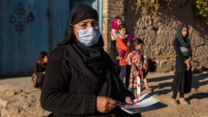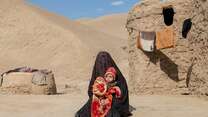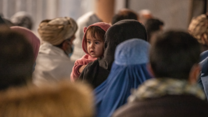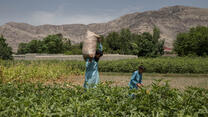Afghanistan is one of the worst humanitarian crises in the works with 24.4 million people, 55% of the population in need of humanitarian assistance. In addition, the financial sanctions applied to Afghanistan after the takeover have paralyzed the banking system, led to a cash and liquidity crisis, and a 40 percent contraction of the GDP within a few weeks. As a result, Afghanistan is on the brink of a humanitarian catastrophe. Half of the Afghan population is suffering from acute food insecurity, 95 percent of households do not have enough to eat, and in the coming months, and three quarters of the population2 will need humanitarian assistance. The number of internally displaced persons (IDPs) reached around 3.5 million in January 20223 and 97 percent of the Afghan population could fall below the poverty line by mid-20224 .
As of August 2021, many CSOs led by women have reportedly stopped working and some heads of organizations and civil society members have left the country. As such, it was necessary to track down representatives to see if their organizations still existed and understand their status – as active or non-active. Women and women’s organizations can be at the forefront of providing critical protection and assistance bringing their contextual knowledge, skills, resources, and experiences to emergency preparedness, response, and resilience building. Their role in holding governments accountable for the enforcement of equitable laws and policies is invaluable in ensuring effective response to the needs of the most marginalized communities and especially those of women and girls.
This study looks at the challenges, barriers, and opportunities of women-led civil society organizations (CSOs) across Afghanistan working in different sectors, with the aim to inform how partners can boost their power and agency and support them to respond to the needs of the most marginalized communities as well as their participation and leadership within the humanitarian response in Afghanistan. The research was commissioned by the Gender in Humanitarian Action (GiHA) working group for Afghanistan’s humanitarian response.
The study took place in February and March 2022. The methodology comprised of mapping women-led and women focused national organizations using initial lists from the GiHA working group and NGO coordination platforms, before collecting other contacts through referrals. This was followed with field research in 15 provinces, where the research team travelled to and held Focus Group Discussions (FGDs) with women CSOs and national women staff. Interviews were also held with provincial level de facto authorities to understand challenges faced and perceptions of different stakeholders in each province. A questionnaire was developed to interview national women’s NGOs and CSOs across all provinces.
At the end of the field research, information was collected from 279 women participants in 23 FGD, and 96 individual organization interviews conducted in 25 provinces some face to face some remotely. This information was used to update the contact database of women CSOs.



